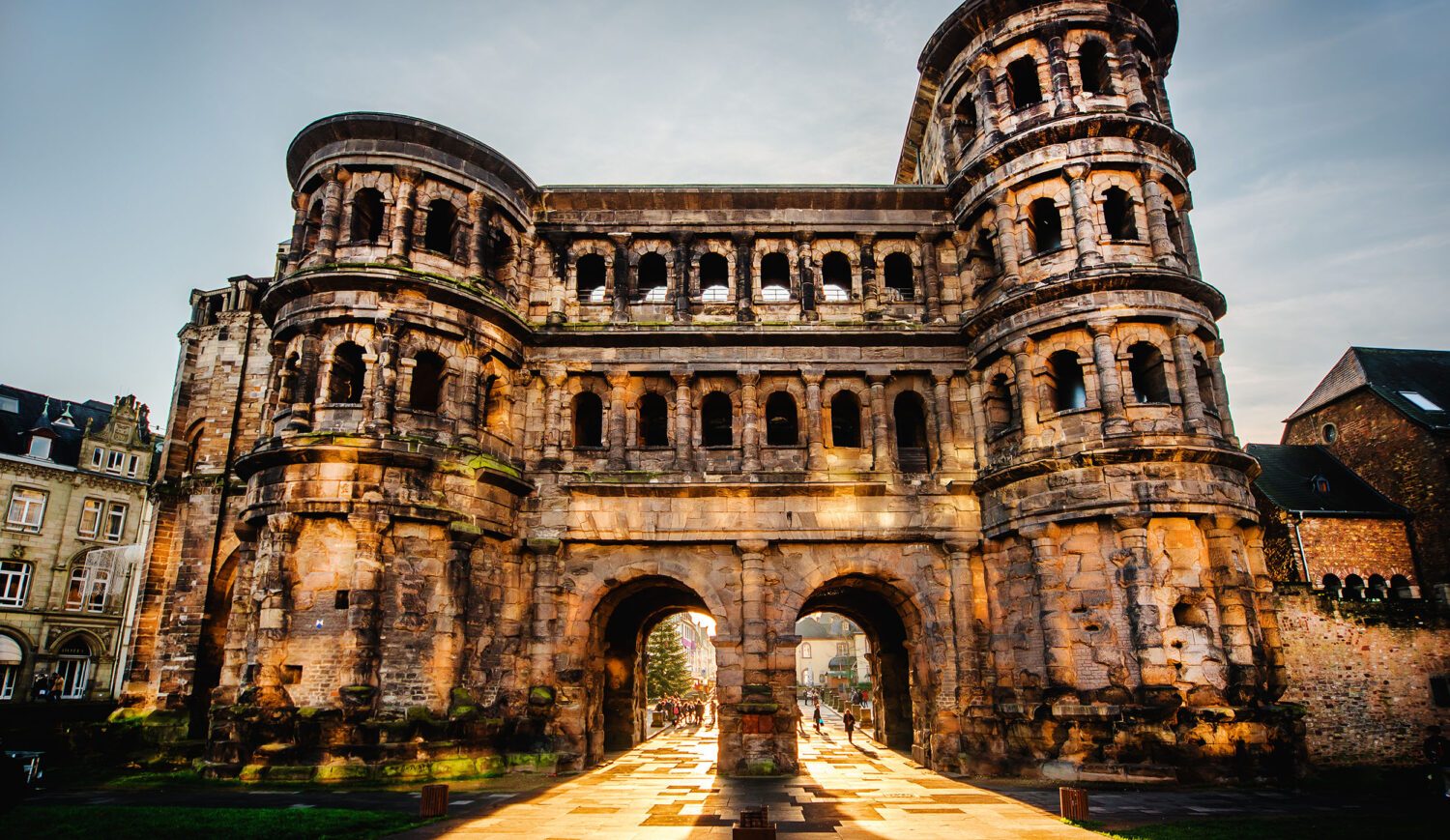The old town of Quedlinburg

Winding along centuries-old cobblestones and past half-timbered houses from the last six centuries, a stroll through Quedlinburg feels like a step back in time. Once the royal palatinate and first capital of the East Franconian Empire, this Harz Mountains town was a key political hub for German kings and emperors.
The 10th-century St. Servatii collegiate church stands as a powerful symbol of this legacy. It holds the tombs of Henry I, the first German king to unite the duchies, and his wife Mathilde, who founded a renowned women’s monastery. Inside, visitors can admire the famed cathedral treasure—an extraordinary collection of medieval goldsmith work, intricate ivory carvings, and rare manuscripts. Together with its well-preserved old town and 16th-century Renaissance castle, Quedlinburg has earned recognition as a UNESCO World Heritage Site.
The old town of Rothenburg ob der Tauber

With its towers, gables, gates, and winding alleys framed by colorful half-timbered houses, this charming Bavarian town embodies the essence of German medieval romanticism. Its iconic landmark, the Plönlein—meaning “little square”—features a crooked-roofed timber house nestled beside the 14th-century Kobolzell Gate and the Sieber Tower.
A guided walking tour is the best way to explore Rothenburg ob der Tauber’s rich history, beginning at the Renaissance-era town hall on the market square. Don’t miss St. Jacob’s Church, a stop on the Way of St. James, which holds the stunning Altar of the Holy Blood—an intricate masterpiece by renowned sculptor Tilman Riemenschneider.
The old town of Trier

Trier is widely considered Germany’s oldest city, with roots tracing back to Roman times. In the 4th century, it thrived as an imperial outpost of Rome. Today, remnants of its glorious past remain: an ancient amphitheater, vast imperial baths with hidden tunnels, and the grand Basilica of Constantine. Towering above all is the Porta Nigra—a UNESCO World Heritage Site and enduring symbol of Roman authority—constructed around 170 AD and still standing proud.
The old town of Heidelberg

Heidelberg, a charming city on the Neckar River, dates back to the 12th century. Remarkably preserved through centuries of conflict, its historic center transports visitors to the 17th century, showcasing beautiful baroque architecture. The city is also home to Germany’s oldest university, founded in 1386, which continues to infuse Heidelberg with a vibrant student atmosphere. Popular spots to experience this lively spirit include the Neckar meadow at the foot of Heiligenberg, accessible via the historic Old Bridge with its graceful arches spanning the river. From there, visitors can admire Heidelberg Castle, perched majestically above the old town on the northern slope of Königstuhl. Once a royal residence rivaling imperial palaces in Vienna and Prague, the castle hosted notable figures such as Frederick II and Elizabeth Stuart. Visitors can reach the castle by walking along the scenic Burgweg path or the Kurzer Buckel stairs, or choose to take the convenient mountain railway for a relaxed ascent.
The old town ofLübeck

Lübeck, the historic Hanseatic city by the Baltic Sea, welcomes visitors with its iconic symbol: the impressive Holsten Gate, featuring striking red brick walls and twin towers. Beyond this gateway, Lübeck reveals the authentic charm of a northern port city, with winding alleys and narrow streets leading into the heart of the old town. Here, wanderers discover hidden treasures like the Holy Spirit Hospital, renowned for its Gothic frescoes and status as one of Europe’s oldest social institutions, reflecting Lübeck’s rich Hanseatic heritage. The market square showcases the ornate façade of the town hall, dating back to 1225, while behind red-brick walls lie beautiful gardens and tranquil courtyards of historic monasteries and convents. Thanks to the remarkably preserved medieval layout and architecture, UNESCO has designated Lübeck’s entire old town center as a World Heritage Site. The seven towers of the Gothic brick churches, dominating the skyline with their unique silhouettes, add to the city’s unmistakable character.
The old town of Wismar

The pre-Pomeranian town of Wismar flourished as a Hanseatic city, with many splendid buildings and monuments bearing witness to its illustrious history. The carefully restored gabled houses of this Baltic Sea port were originally grand residences for the ambitious middle class. Visitors are often struck by awe when they look up at the spires of the three imposing Gothic brick churches. At the market square, the Renaissance town hall and the large 17th-century fountain captivate the eye. Yet perhaps the most precious landmark lies on the east side of the square: the Old Swede, one of the city’s oldest townhouses, boasting an impressive brick façade dating back to 1380. The Scandinavian ambiance that fills Wismar hints that the building’s name was no accident. Indeed, the restaurant inside, established in 1878, recalls the era when Wismar was part of the Swedish Kingdom.
The old town of Görlitz

Medieval hall houses, walkable fortifications, homes adorned with Wilhelminian and Art Nouveau facades, a Renaissance town hall, and the cathedral-like parish church of St. Peter and Paul — Görlitz was fortunate during World War II, escaping almost all destruction. A stroll through this border town on the Neisse River thus becomes a fascinating journey through 500 years of European architectural heritage. Among over 4,000 historic monuments, one stands out: the Schönhof, a Renaissance building that was once one of the city’s most prestigious residences. Today, visitors who enter the former princely guesthouse are welcomed by the Silesian Museum, which vividly brings the region’s thousand-year cultural history to life.
The old town of Celle

In Celle’s old town, charming half-timbered houses stand closely together, forming a unique architectural ensemble worldwide. Among the most impressive is the Hoppener Haus, built in 1532—a six-story timber-framed building adorned with intricately carved mythical creatures, jesters, and other figures on its façade. The old town also features the 700-year-old baroque-style St. Marien town church, with an altar dating back to 1613. A special highlight is the 75-meter-high tower, where the bell-ringer’s songs still echo today. Just behind stands Celle Castle, blending Gothic, Renaissance, and Baroque styles, surrounded by lush meadows and trees of the castle park.
The old town of Erfurt

The Petersberg Citadel, with its mysterious listening passages, stands as a testament to Erfurt’s rich past. The monumental St. Marien Cathedral, showcasing Romanesque and Gothic styles, houses the largest free-swinging bell from the Middle Ages. Nearby, the over 1,000-year-old Old Synagogue protects the Erfurt Treasure—medieval jewelry and coins—hidden in its cellar. Erfurt’s historical landmarks create a vibrant tapestry of history.
At the city’s heart is the 12th-century Krämerbrücke, the longest fully built bridge in Europe, crossing the Gera River. This charming bridge is lined with cozy half-timbered houses hosting galleries, antique shops, bookstores, and other delightful boutiques, all part of the historic Via Regia trade route.
The old town of Mulhouse

Mulhousia turrita – Mühlhausen, known in the Middle Ages as the “towered city,” owes its name to the thirteen Gothic churches and chapels whose bell towers dominate the skyline. The Gothic Church of St. Mary, featuring a permanent exhibition on the Reformation, the Kornmarktkirche, and the Divi Blasii Church with its valuable medieval stained glass and carved altar, are just a few of the sacred buildings that reflect the city’s 800-year history. Other notable sights include the medieval fortifications and the Popperode Fountain House from 1614, where the traditional fountain festival has been celebrated every summer for centuries.

























